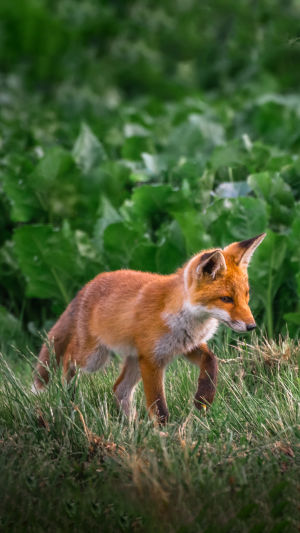In Aesop's fables, there is an animal that can't eat grapes but says sour grapes, the fox. In real life, the fox is also a symbol of cunning.
The reason why foxes are cunning is that compared with other animals, foxes will make more choices to protect themselves when they encounter situations. They are more likely to achieve their purposes by using stratagems, and other animals will suffer losses.
The fox's cunning is a survival instinct. They will take advantage of the weaknesses and characteristics of small animals to engage in a battle of wits.
When faced with an emergency, the fox will collapse on the ground and play dead. At this time, the fox's body will become weak and its breathing will stop, but it will constantly calculate, judge, and evaluate the subsequent risk using its hearing.
At this time, the beasts see such a fox, the vigilance will relax, and the fox can take advantage of it, suddenly from the ground to flee. They will also fumigate the other side when the beast is approaching and then run away as fast as they can.
When a fox sees a hunter making a trap, it will quietly follow the hunter behind. After seeing the hunter set a trap and leave, it will leave a stench next to the trap that can be known by its companions as a warning.
When the fox meets the hedgehog, it drags him into the water when he is curled up. When seeing ducks in the river, they will deliberately throw some grass into the water. When the ducks get used to it, they will secretly take a lot of dead grass as cover and dive to hunt.
Foxes are good at running fast and long distances. They like to live in groups and often chase and hunt for food. Omnivorous, feeding on herbivores and rodents; Some are carrion, vegetative or omnivorous.
Fox reproduction rate is high, disease resistance is strong, food miscellaneous, and good feeding. It has high economic value. Widely distributed in Eurasia and North America, but also introduced to Australia and other places.
The habitat of foxes is often not fixed, and they usually roost alone except during breeding and breeding. They usually go out at night and sleep in caves during the day. Their long tails keep them warm and moisture-proof.
However, they sometimes come out to search for food in remote areas during the day. Although its legs and feet are short, its claws are sharp, and it can run very fast. When chasing prey, its speed can reach more than 50 kilometers per hour, and it is good at swimming and climbing trees.
They have a strong memory, developed a sense of hearing and smell, and are quick and durable. Unlike other canines, most of them hunt for food but can try all kinds of ways to catch prey with tricks.
It usually first in the lush vegetation, wild mice, and hare frequent activity of the area, based on the smell, calls, and tracks to find their traces, and then alert, quietly approaching the prey.
Even the body completely lies on the ground and crawls, so as not to frighten the prey and escape. They burrow into caves or under rocks or trees and crouch down, ready to make a move.
They are lonely hunters. In an urban environment, they have an easy time finding food in the trash. They are not only predators but also random omnivores.
They mainly eat wild rodents and hares, including voles, house mice, yellow mice, gophers, and chipmunks. They also eat frogs, fish, birds, eggs, insects, and food found in dead animals and abandoned garbage.
If the food cannot be eaten for a while, it is carefully chosen in a hidden place, carefully buried, and only left after some camouflage and elimination of all traces, so as not to be found by other animals.





